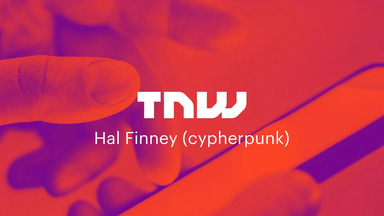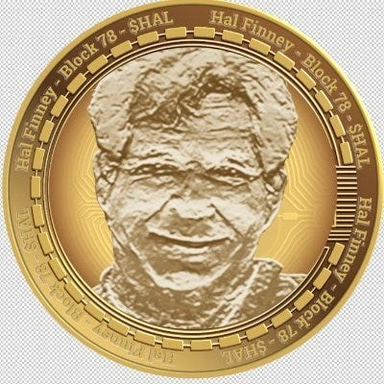Read
Edit
History
Notify
Share
Hal Finney
Harold Thomas Finney II, commonly known as Hal Finney, was a pioneering computer scientist, cryptographer, and one of the earliest contributors to Bitcoin who received the first Bitcoin transaction from Satoshi Nakamoto on January 12, 2009. [1]
Overview
Hal Finney was a prominent figure in the cypherpunk movement and made significant contributions to cryptography and digital privacy before becoming involved with Bitcoin.
Born on May 4, 1956, in Coalinga, California, Finney developed an early interest in computers and mathematics, which shaped his future career path. His work on encryption systems, particularly Pretty Good Privacy (PGP), and his development of the first reusable proof-of-work system laid crucial groundwork for what would eventually become Bitcoin.
Despite being diagnosed with amyotrophic lateral sclerosis (ALS) in 2009, Finney continued contributing to cryptocurrency development until his death in 2014, leaving behind a profound legacy in the fields of cryptography and digital currency. [2]
Early Life and Education
Harold Thomas Finney II was born on May 4, 1956, in Coalinga, California. From an early age, he showed a keen interest in computers and technology, which would later shape his career path and contributions to the field of cryptography [1].
Finney pursued higher education at the California Institute of Technology (Caltech), where he earned a degree in engineering in 1979. This formal education provided him with a solid foundation in technical disciplines that would later prove invaluable in his work with cryptographic systems [2].
Career in Cryptography
Work at PGP Corporation
One of Finney's most significant early contributions to the field of cryptography was his work on Pretty Good Privacy (PGP), an email encryption program developed by Phil Zimmermann in 1991. Finney was among the first developers to work on the PGP software in its early stages, before the formation of PGP Corporation [1].
The PGP Corporation was later established in 2002 to provide enterprise-grade security solutions based on Zimmermann's technology. By this time, Finney's groundbreaking research on PGP encryption had already significantly influenced the cryptography community [1].
Cypherpunk Movement
Finney was a key figure in the cypherpunk movement, a group dedicated to achieving privacy and security through proactive use of cryptography. As a cypherpunk, he was committed to developing technologies that would enhance privacy and security in the digital realm [2].
His dedication to privacy in the digital age was evident throughout his career. Finney had a deep understanding of cryptographic principles, which contributed to strengthening the security of digital communication. His career was characterized by a profound interest in privacy-enhancing technology and cryptographic protocols, which eventually led him to the world of cryptocurrencies [1].
Contributions to Bitcoin
Reusable Proof-of-Work System
Before Bitcoin's creation, Finney demonstrated his visionary approach to cryptography by developing the first reusable proof-of-work (RPoW) system in the early 2000s. RPoW built upon Adam Back's Hashcash proof-of-work algorithm by allowing computational work to be reused, addressing early concerns about the energy-intensive nature of proof-of-work systems [1].
This innovation was a significant precursor to the consensus mechanism later implemented in Bitcoin, showing Finney's forward-thinking approach to digital currency systems.
First Bitcoin Transaction
Finney's most historic contribution to Bitcoin came on January 12, 2009, when he received the first-ever Bitcoin transaction from Satoshi Nakamoto. Satoshi sent 10 BTC to Finney, marking the beginning of peer-to-peer transfers of digital assets [1].
This transaction has become legendary in cryptocurrency history, cementing Finney's place as a pivotal figure in the early days of Bitcoin [2].
Early Bitcoin Mining and Software Development
Finney was among the first to download, install, and use the Bitcoin software when Satoshi Nakamoto initially released it. During his early experimentation, he mined Bitcoin and identified and fixed software problems. However, he temporarily removed the Bitcoin software due to its excessive CPU consumption [1].
In a reflection on his early involvement, Finney wrote: "Cryptographers have seen too many grand schemes by clueless noobs. They tend to have a knee-jerk reaction." This statement highlights his initial skepticism, which was common among experienced cryptographers, yet he was open-minded enough to explore Bitcoin's potential [1].
Return to Bitcoin Development
After stepping away from Bitcoin temporarily, Finney returned to the project in 2010, encouraged by Bitcoin's resilience and increasing value. His reengagement demonstrated his growing conviction in Bitcoin's potential as a decentralized financial platform [1].
Throughout this period, Finney remained an active participant in online forums and discussions about cryptocurrency, focusing on themes of freedom, privacy, and the democratization of finance.
Battle with ALS and Final Contributions
In 2009, the same year Bitcoin was launched, Finney was diagnosed with amyotrophic lateral sclerosis (ALS), a debilitating neurological condition. The disease progressively paralyzed him in the final years of his life [1].
Despite his illness, Finney continued programming, albeit at a slower pace, demonstrating his unwavering commitment to the Bitcoin community. Even as ALS significantly limited his physical capabilities, he worked on developing an innovative Bitcoin wallet [1].
In a poignant demonstration of Bitcoin's practical value, Finney's family was able to sell some of the Bitcoin he had mined to fund his medical care. He passed away on August 28, 2014, due to complications from ALS [1].
Legacy and Impact
Cryopreservation
Following his wishes, Finney's body was cryopreserved at the Alcor Life Extension Foundation after his death. Cryopreservation involves freezing a body at extremely low temperatures post-mortem, with the aim of preserving it for potential future revival or medical advancements [1] [2].
This decision reflects Finney's forward-thinking nature and hope for future technological possibilities, consistent with his pioneering work in digital technology.
Enduring Influence on Cryptocurrency
Finney's contributions to encryption and cryptocurrencies have had a lasting impact on the field. His seminal work laid the groundwork for secure communication protocols and decentralized digital currency. His unwavering commitment to privacy and personal autonomy in the face of technological progress remains particularly relevant in an era of increasing concerns over data privacy and surveillance [1].
In the cryptocurrency community, Finney is remembered not only for his technical contributions but also for his vision of what digital currencies could achieve. In a 2011 BitcoinTalk post, he wrote, "Since we're all rich with Bitcoins, or we will be once they're worth a million dollars like everyone expects, we ought to put some of this unearned wealth to good use." This statement reflects both his understanding of Bitcoin's potential value and his belief in using wealth for positive purposes [1].
Speculation About Satoshi Nakamoto
Due to his early involvement with Bitcoin and close collaboration with Satoshi Nakamoto, there has been speculation about Finney's potential role in the creation of Bitcoin. Some have even suggested that he might have been Satoshi Nakamoto himself, though this remains unconfirmed speculation [2].
Technical Contributions
Finney's technical expertise extended beyond his work on Bitcoin. His contributions to cryptography, particularly his work on PGP and the development of the reusable proof-of-work system, demonstrated his innovative approach to solving complex technical challenges.
His understanding of cryptographic principles and commitment to privacy-enhancing technologies made him a respected figure in the technical community long before the advent of Bitcoin. These earlier contributions laid important groundwork for the development of secure, decentralized digital currencies [1].
Hal Finney
Feedback
Did you find this article interesting?
Media





REFERENCES
[1]
[2]